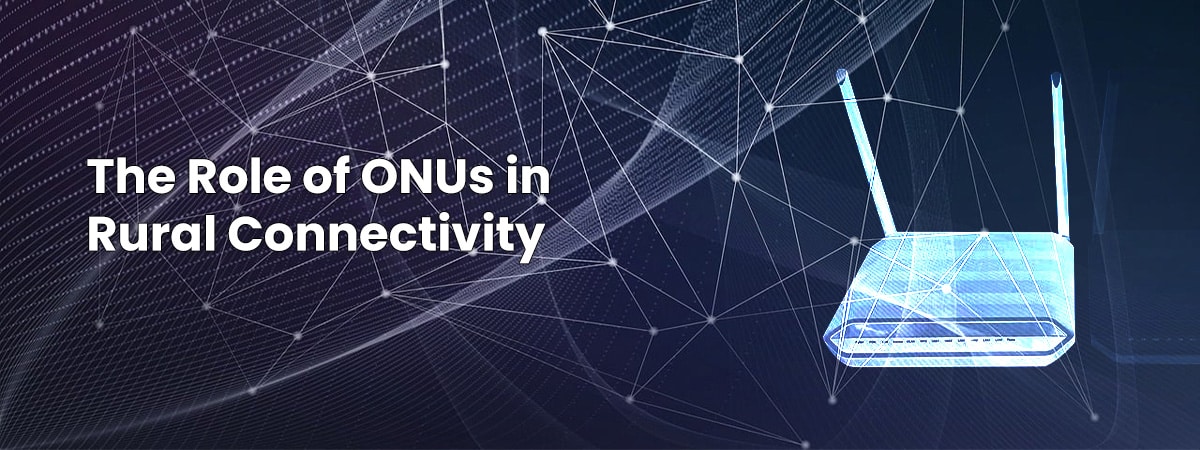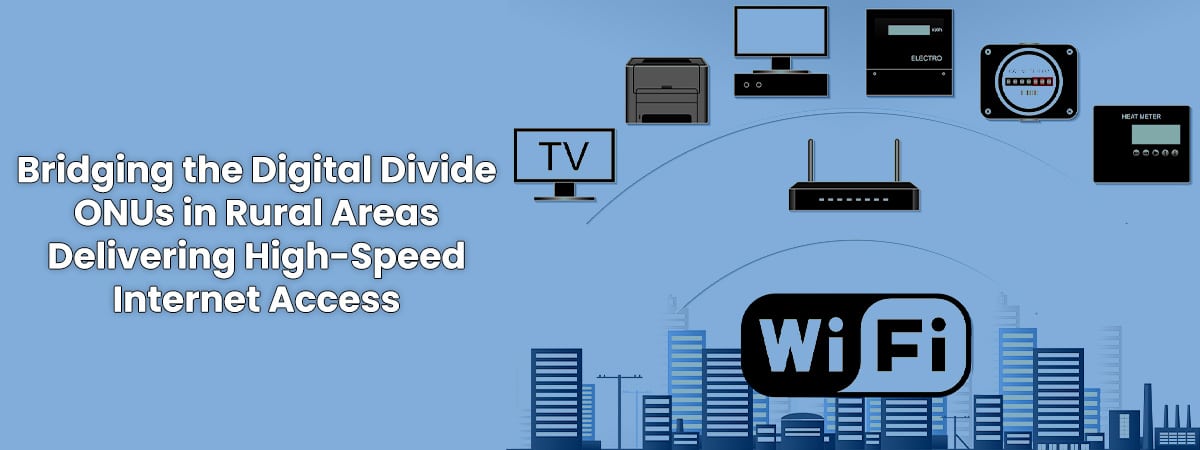In our increasingly connected world, access to high-speed internet has become not just a luxury but a necessity. It’s a gateway to education, employment opportunities, healthcare, and social inclusion. However, the digital divide persists, disproportionately affecting rural and underserved communities. Optical Network Units (ONUs) are emerging as a powerful tool in narrowing this gap. In this article, we will explore how the strategic deployment of ONUs in rural areas can bridge the digital divide by providing high-speed internet access to those who need it the most.
Understanding the Digital Divide
The digital divide refers to the gap between those who have access to modern information and communication technologies, particularly the Internet, and those who do not. It’s a multifaceted problem influenced by factors such as geographic location, economic disparities, and infrastructure limitations. Rural areas often face the brunt of this divide, as they typically lack the necessary infrastructure for high-speed internet access.
The Role of ONUs in Rural Connectivity

ONUs, as mentioned earlier, are critical components in the deployment of fiber-optic networks. They play a pivotal role in converting optical signals into electrical signals that can be used for internet access. Here’s how ONUs are helping to bridge the digital divide in rural areas:
- Fiber to the Home (FTTH) Networks: ONUs are integral in FTTH networks, which bring fiber-optic connections directly to homes and businesses. This technology eliminates the limitations of traditional copper or DSL networks, providing rural communities with access to the same high-speed internet services available in urban areas.
- Cost-Effective Deployment: ONUs are cost-effective solutions for rural broadband deployment. They are compact and versatile, allowing for efficient installation and maintenance. This cost efficiency makes it more feasible for service providers to expand their networks into rural areas.
- Scalability: ONUs are highly scalable. This means that as the demand for high-speed internet services in rural areas grows, service providers can easily expand their networks without significant infrastructure overhauls.
- Reliable Connectivity: Fiber-optic networks with ONUs deliver reliable and consistent internet connections. This is crucial for rural communities, especially when it comes to applications like telemedicine, remote education, and online job opportunities.
- Future-Proofing: Investing in fiber-optic networks with ONUs future-proofs rural communities. As technology continues to advance, these networks can accommodate higher bandwidth requirements and emerging technologies, ensuring that rural areas stay connected and competitive.
The Impact on Rural Communities

The deployment of ONUs in rural areas has a profound impact on these communities:
- Education: High-speed internet access enables students in rural areas to access online resources, collaborate on projects, and participate in virtual classrooms. This empowers them to pursue higher education and career opportunities.
- Telehealth: Rural healthcare providers can offer telehealth services, extending medical expertise to patients who might not have easy access to hospitals or clinics. Patients can consult with specialists, monitor chronic conditions, and access medical records online.
- Economic Development: High-speed internet access is a catalyst for economic growth in rural areas. It attracts businesses, supports e-commerce ventures, and creates job opportunities, reducing unemployment rates.
- Community Connectivity: The internet fosters community connectivity by enabling residents to stay connected with family and friends, access local news and information, and participate in civic activities.
Challenges and Solutions

While the deployment of ONUs in rural areas holds immense promise, there are challenges to overcome, such as the high upfront costs of fiber-optic infrastructure. Government initiatives, public-private partnerships, and grants are essential to support these efforts. Additionally, ensuring digital literacy and affordable subscription plans are equally crucial to maximizing the impact of connectivity in rural communities.
In conclusion, ONUs, along with fiber-optic networks, are transformative tools for bridging the digital divide that has long persisted in rural areas. These technologies empower rural communities by providing high-speed internet access and unlocking opportunities in education, healthcare, and economic development. As we continue to work towards a more connected and equitable world, the strategic deployment of ONUs in rural areas is a significant step forward in ensuring that no community is left behind in the digital age.
